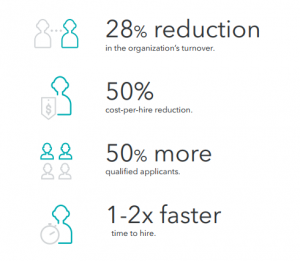
“I really like working with other people. I’m uncomfortable working by myself, it’s just not the same. So I’d love to have everyone go back to the office five days a week.” That’s what Marvin, the long-time CEO of a company with 4,000 employees, told me when we discussed his plans for creating competitive advantage in the post-pandemic transition back to the office.
Then, he added: “However, we’re doing a lot of hiring for managerial roles right now to prepare for the post-pandemic recovery. One of the first questions applicants ask is if they have to move and how much time they can work from home, especially younger ones. Also, our internal surveys show that 29% of our employees want to stay fully remote and 58% prefer a hybrid model. I guess I have to accept the fact that the new generation of leaders and employees doesn’t have the same preferences that I do. Our most important resource is our people. I need to make sure that I’m tapping that resource most effectively.”
I admired his willingness to update his beliefs and do what’s uncomfortable for him. People are indeed the most important resource of any organization.
Yet so many leaders are failing to live by that maxim. They instead prefer to do what’s comfortable for them, even if it devastates employee morale and engagement. They fail to recognize how doing so deeply undercuts the bottom line through reducing productivity, decreasing retention, and harming recruitment. The current call by many leaders for employees to return to the office pretty much full-time represents an egregious and self-defeating example of top executives choosing to do what’s comfortable for them over what’s best for their people and their bottom line.
Fortunately, many more forward-looking leaders walk the talk of truly valuing their people. After evaluating the internal and external environment, they recognized that they can’t simply try to turn back the clock to January 2020 if they want their organizations to survive and thrive in the post-COVID environment. Instead, they made the strategic decision to support their employees working remotely part or full-time. They see this wise decision-making approach, though uncomfortable for themselves, as a way of gaining and maintaining a competitive advantage in the most important resource for any organization. Their ability to go against their gut intuitions to make the wisest and most profitable decisions shows arguably the most important quality of effective and successful leaders.
These insights rely on my interviews with 47 mid-level and 14 senior leaders in 12 companies for which I helped develop a strategic approach to returning to the office after the pandemic. It reveals their motivations and reasoning as they chose this uncomfortable, future-oriented, and profitable strategy.
What Do Employees Actually Want?
Many recently-published independent, large-scale, and in-depth research studies (1, 2, 3, 4, 5, 6, 7, 8) surveyed full-time employees on what kind of work arrangements they would want after the pandemic is over. A meta-analysis of these studies reveals the following 10 key take-aways:
- Over two-thirds of all employees who worked remotely in the pandemic want and expect to work from home half the time or more permanently, while over a fifth want to work remotely full-time
- Over two-fifths would leave their current job if they didn’t have the option of remote work of two to three days per week
- Over a quarter plan to leave their job after the pandemic, especially those who rate their company cultures as “C” or lower
- Over two-fifths of all employees, especially younger ones, would feel concern over career progress if they worked from home while other employees like them did not
- Most employees see telework and the flexibility it provides as a key benefit, and are willing to sacrifice substantial earnings for it
- Employees are significantly more productive on average when working from home
- Over three-quarters of all employees will feel happier and more engaged, be willing to go the extra mile, feel less stressed, and have more work-life balance with permanent opportunity for two to three days of telework
- Over half of all employees feel overworked and burned out, and over three-quarters experience “Zoom fatigue” and want less meetings
- Employees need funding for home offices and equipment, but no more than 25% of companies provided such funding so far
- Over three-fifths of all employees report poor virtual communication and collaboration as their biggest challenge with remote work, and many want more training in these areas
Back to the Past?
The majority of employers – ranging from two-thirds to three-quarters in various studies – plan for a hybrid schedule of having previously-remote employees return to the office for about half the time. That would satisfy the 60-65% of all employees who want such a hybrid schedule, as well as the 15-20% seeking full-time in-person work.
It would be a serious problem for the 20-25% who want to remain full-time remote. Many of the latter already moved out of their previous geographical areas. They structured their lives around fully-remote work forever.
Yet before addressing this tension, let’s consider the small proportion of employers who intend to force their employees who can easily work remotely back to the office full-time. For instance, Goldman Sachs CEO David Solomon called working from home “an aberration that we’re going to correct as quickly as possible.”
It’s not only traditional businesses like investment banking that are making such decisions, at odds with employee desires and improved productivity. Tech companies do so as well. Google has declared that employees will not be regularly permitted to work remotely more than 14 days per year. The CEO of Netflix, Reed Hastings, described remote work as a “pure negative” and intends his employees to get back to the office after vaccination.
Creating Competitive Advantage in the New Normal
More forward-looking leaders whom I interviewed realize the world changed. Like Marvin, they may prefer on a personal level to be surrounded by people when they work. They may feel uncomfortable with the idea of not having a full-time, in-office culture. However, they recognize that for the sake of their most important resource, it simply makes sense to let those employees who can productively do so work from home much or all of the time.
For example, a host of large companies – ranging from insurance giant Nationwide to tech firm Facebook to financial major drug maker Novartis – decided to let many or all of their employees who can do so work from home permanently. Many more announced a switch to a permanent hybrid model of 2-4 days of remote work after the pandemic. They include Citigroup, Ford, Google, Microsoft, Siemens, Salesforce, Target, and many others.
Of these hybrid-first companies, many permit a substantial minority – 10-30% – to work remotely full-time if their roles allow such work easily. Such roles include call center staff and others who do not need to collaborate intensively with fellow employees.
To capitalize on their main competitive advantage, the leaders at the companies whom I helped to transition strategically back to the office overwhelmingly adopted a hybrid-first model. That means having most staff come in from one to three days per week. They also permitted full-time remote options for those employees whose roles facilitate full-time work. In addition, they allowed those who wanted to come in full-time to do so.
The leaders I spoke with cited several factors as motivating their hybrid-first models. The first and primary concern stemmed from retention. Their internal surveys on remote work preferences matched the large public external surveys indicating a strong desire among most employees for hybrid work. A substantial minority – in a couple of companies, a majority – wanted fully-remote work.
Now, the internal surveys generally did not ask about job switching intent, given the low likelihood of accurate answers to such questions. Still, the top leaders knew from external surveys that very many employees are seriously considering job transitions after the pandemic. Naturally, some of these employees worked for them.
Moreover, many of the internal surveys asked employees whether they moved away from the corporate office location during the pandemic; anywhere from a quarter to a third or more in most surveys answered affirmatively. Given this situation, these leaders realized that a hybrid-first model with fully-remote options would greatly improve retention.
That retention improvement stemmed especially from the Spring 2021 recruitment surge as companies stepped up their hiring for the post-pandemic recovery. That surge gave employees, especially the most capable ones that had the most options, many more opportunities. Failing to offer hybrid and fully-remote options meant the prospect of losing the best staff.
On the flip side, many top leaders cited recruitment as a major driver of their hybrid-first models. Over 90% of the companies I helped planned for a major recruitment ramp-up for the post-COVID world. They cited a desire to appeal to the best candidates as a key reason for their shift.
The executives recognized the widespread perception among employees of flexible schedules and substantial or full-time remote work as a major benefit. Thus, they saw this model as enabling them to get better labor at lower prices. Those savings would be much higher than their planned investment into supporting their staff financially with funding for work-from-home equipment and furniture.
Moreover, allowing some staff members full-time remote work means a vast expansion of the talent pool. After all, remote workers can be hired anywhere, rather than in a specific geographic area. A further benefit: those in lower cost-of-living areas are willing to take lower salaries.
Even the best people won’t work well if they’re unhappy, disengaged, and stressed. Internal surveys conducted by these top leaders aligned with the external surveys on this question. They showed that if the workers who worked remotely during the pandemic didn’t have substantial work-from-home options after the pandemic, they would be less happy and engaged, unwilling to go the extra mile or recommend the company to their peers.
The same internal surveys showed that those working from home gained more work/life balance and flexibility; they would feel stressed and constrained without at least a hybrid model. Who wants frustrated and stressed-out workers bad-mouthing the company to their peers, right?
Top leaders cited a desire to protect the productivity boost experienced by remote workers as another motive for their hybrid-first models. Surveys of managers and employees, along with internal company data, showed a boost in productivity of anywhere from 2 to 14% in these companies for those employees who worked remotely in the pandemic.
This average hid an important countertrend. While on average productivity per employee increased, more employee time was eaten up with meetings and other communication. That means that productivity gains came from tasks employees did by themselves, rather than collaborative tasks, which took on average more effort.
The leaders felt that having employees work in the office a couple of days would address some of the productivity challenges of collaborative tasks. After all, face-to-face communication is generally more efficient for more complex and nuanced issues. Thus, workers would focus on collaborative tasks while in the office. While at home, they would focus more on their individual tasks. That way, the leaders figured they could get the best of both worlds.
A major financial benefit of this approach stemmed from cutting down on costs from real estate and associated office-based services and products. The leaders I spoke to cited plans to substantially downsize office space as a significant, but not primary, factor in their decision-making process. They did plan for some major one-time investment into reconfiguring their office spaces for hybrid work. Yet these costs paled in comparison to ongoing real estate savings.
Finally, the leaders cited a desire to mitigate risk and prepare for future disruptors as a factor in their new policies. If staff worked from home a large chunk of their time, the company would be much more prepared to make shifts to working from home in case of any future disruptions. A diversified workforce located away from company offices is less vulnerable to the risk of localized or even regional events.
Of course, it requires an adaptation of risk management protocols to ensure employees harden their home office against disruptions. It also requires additional risk management strategies to ensure that employees living in areas prone to disruptions such as hurricanes have others cross-trained and ready to take on their work in case of any disruptions for that employee.
Conclusion
For creating competitive advantage in the new normal, forward-looking leaders whom I interviewed realize the world changed. They may prefer on a personal level to be surrounded by people when they work. They may feel uncomfortable with the idea of not having a full-time, in-office culture. However, they recognize that for the sake of their most important resource, it simply makes sense to let those employees who can productively do so work from home much or all of the time.
To capitalize on their main competitive advantage – their people – the leaders at the companies whom I helped to transition strategically back to the office overwhelmingly adopted a hybrid-first model. That means having most staff come in from one to three days per week. They also permitted full-time remote options for those employees whose roles facilitate full-time work. In addition, they allowed those who wanted to come in full-time to do so. If you do the same, and follow best practices on returning to the office, you will seize competitive advantage and thrive in the new normal.
Key Takeaway
For creating competitive advantage in the new normal, forward-looking leaders need to let go of their preferences for in-office work. They need to adopt a hybrid-first model for most staff, and support full-time remote work for a minority.
Questions to Consider
- How do you plan on creating competitive advantage in the new normal?
- Are there any preferences you need to let go to follow best practices in returning to the office?
- What will you do differently after reading this piece?
Image credit: PXhere
Originally Published at Disaster Avoidance Experts on July 6, 2021.
Business & Finance Articles on Business 2 Community
(60)
Report Post





